#nahavand
Text



Persian Carpet/ nahavan made/ Iran
Twice - size: 2mx3.15m/ 2mx2.90 - price: ~1k$
#iran#carpet#persian carpet#persian#persian rugs#art#luxury carpet#handcrafted#luxury#rug#hamedan#nahavand
59 notes
·
View notes
Text
اعدام شش زندانی در نهاوند، تبریز، ارومیه و زنجان
Continue reading اعدام شش زندانی در نهاوند، تبریز، ارومیه و زنجان
#Execution of six prisoners in Nahavand#human rights#Human rights organization MKN#MKN314#Tabriz#Urmia and Zanjan#مهدی پیری#محمد داغستانی#مظاهر عیوضی#نهاوند#وحید عباسی#ارومیه#اعدام#اعدام شش زندانی در نهاوند، تبریز، ارومیه و زنجان#تبریز#جنایات جمهوری اسلامی-The crimes of the Islamic Republic#حقوق بشر#حقوق بشر - human rights#خالد جهانگیری#خبر فوری#زنجان#سازمان حقوق بشری امکیان#سازمان حقوق بشرmkn#علی آزمون
0 notes
Photo

(3/54) “It’s been forty-three years since I’ve seen my home. All I have left is a jar of soil. It’s good soil. Nahavand is a city of gardens. A guidebook once called it ‘a piece of heaven, fallen to earth.’ The peaks are so high that they’re capped with snow. A spring gushes from the mountain, and flows into a river. It spreads through the valley like veins. We lived in the deepest part of the valley, the most fertile part. Our father owned thousands of acres of farmland. When we were children he gave us each a small plot of land to plant a garden. None of the other children had the discipline. They’d rather play games. But I planted my seeds in careful rows. I hauled water from a nearby well. I pulled every weed the moment it appeared. As the poets say: ‘If you cannot tend a garden, you cannot tend a country.’ My garden was the best; it was plain for all to see. The discipline came from my mother. She was very devout. She prayed five times a day. Never spoke a bad word, never told a lie. My father was a Muslim too, but he drank liquor and played cards. He’d wash his mouth with water before he prayed. The Koran was in his library. But so were the books of The Persian Mystics: the poets who spent one thousand years softening Islam, painting it with colors, making it Iranian. Back then it was a big deal to own even a single book, but my father had a deal with a local bookseller. Whenever a new book arrived in our province, it came straight to our house. I’ll never forget the morning I heard the knock on the door. It was the bookseller, and in his hands was a brand-new copy of Shahnameh. The Book of Kings. It’s one of the longest poems ever written: 50,000 verses. The entire story of our people. And it’s all the work of a single man: Abolqasem Ferdowsi. Shahnameh is a book of battles. It’s a book of kings and queens and dragons and demons. It’s a book of champions called to save Iran from the armies of darkness. Many of the stories I knew by heart. Everyone in Iran knew a few. But I’d never seen them all in one place before, and in a beautiful, leather-bound edition. The book never made it to my father’s library. I brought it straight to my room.”
چهلوسه سال از هنگامی که از میهنم دور افتادهام میگذرد. آنچه برای من باقی مانده، شیشهایست پر از خاک. خاک خوبیست. خاک نهاوند، خاک ایران. نهاوند شهر باغهاست. زمانی کتاب ایرانگردی را خواندم که آن را "تکهای از بهشت بر زمین افتاده" نامیده بود. بر قلههای بلندش برف همیشگی پیداست. چشمهای که از دل کوه میجوشد، رودی میشود. چون رگهای تن در سراسر دره پخش میشود. ما در ژرفترین بخش دره زندگی میکردیم. حاصلخیزترین بخش آن. پدرم از زمینداران بود. او در کودکی من، به هر یک از فرزندانش پاره زمینی در باغ خانه داد تا باغچهای درست کنیم. بچههای دیگر چندان علاقهای به این کار نداشتند. آنها بازی را بیشتر دوست داشتند. ولی من دانههایم را به هنگام با دقت میکاشتم. آب را از حوض یا چاه نزدیک میآوردم. گیاهان هرزه را بیدرنگ وجین میکردم. همانگونه که میگویند: «اگر نتوانید از باغچهتان نگهداری کنید، از میهنتان نیز نمیتوانید.» باغچهی من بهترین بود؛ زیباییاش بر همگان آشکار. این نظم را از مادرم آموخته بودم. مادرم بسیار پرهیزکار بود. روزی چند بار نماز میخواند، هرگز واژهی بدی بر زبان نمیراند، هیچگاه دروغ نمیگفت. پدرم نیز مسلمان بود، ولی در جوانی گاهی نوشابهی الکلی هم مینوشید و ورقبازی هم میکرد. پیش از نماز دهانش را آب میکشید. در کتابخانهاش قرآن و کتابهایی از عارفان ایرانی داشت. شاعرانی که در درازای هزار سال اسلام را نرم و ملایم کرده بودند، به آن رنگ و بو بخشیده بودند، ایرانی کرده بودند. در آن زمان که داشتن کتاب کار آسان و عادی نبود، پدرم با کتابفروش محلی قراردادی داشت. او هر بار کتاب جدیدی به دستش میرسید، باید یکراست نسخهای به خانهی ما بفرستد. هیچگاه آن بامدادی را که صدای کوبیدن در را شنیدم، فراموش نخواهم کرد. کتابفروش آمده بود و در دستانش کتاب شاهنامهی جدیدی بود. نامهی شاهان. یکی از بلندترین شعرهایی که تا کنون سروده شده است، بیش از پنجاه هزار بیت شعر. همهی داستانهای مردمانمان. همهی ایران در شعری یگانه. و همهشان سرودهی یک شاعر: ابوالقاسم فردوسی. شاهنامه کتاب نبردهاست. کتاب شاهان و شهبانوان، اژدهایان و اهریمنهاست. کتاب پهلوانانیست که ایران را در برابر نیروهای اهریمنی پاس میدارند. بیشتر داستانها را از بر بودم. هر ایرانی داستانی از شاهنامه میدانست. ولی من هیچگاه همهی داستانهای شاهنامه را یکجا در جلدی چرمی و زیبا ندیده بودم. آن کتاب هرگز به کتابخانهی پدرم راه نیافت. آن را یکراست به اتاقم بردم
908 notes
·
View notes
Text
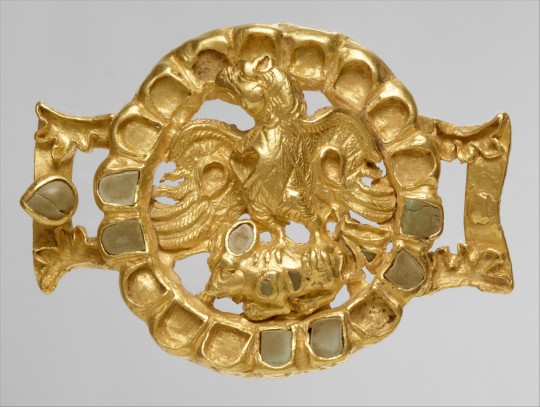
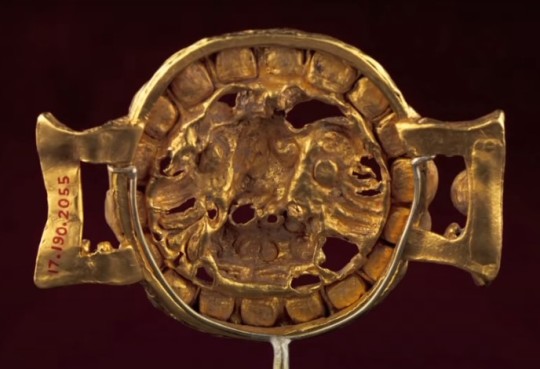
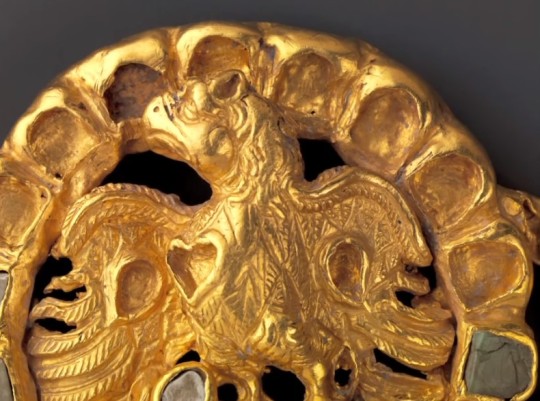
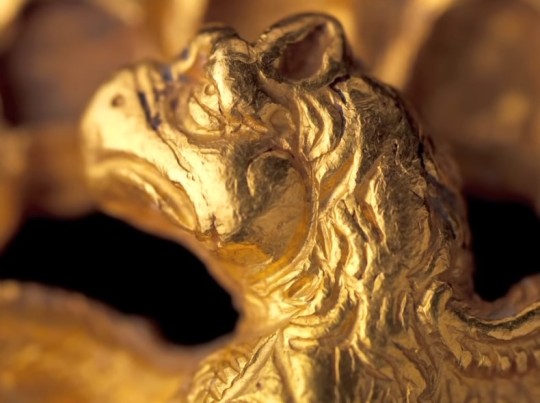
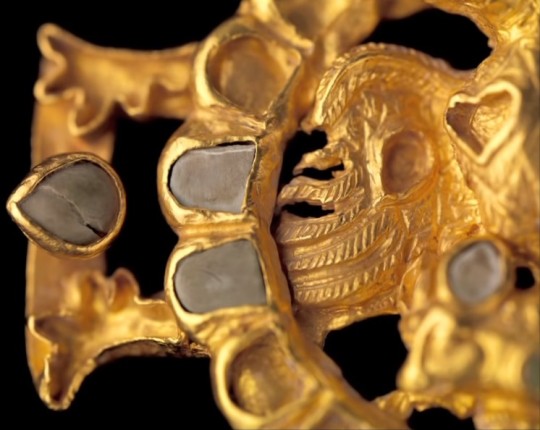

Gold clasp of eagle, possibly belonging to the House of Karen, 1st-2nd C. CE. Found in Nahavand. The House of Karen seems to have been descended from the Parni, who were themselves an offshoot of the Scythians. Ernst Herzfeld wrote that this item probably belonged to their house.
"House of Karen (Middle Persian: Kārēn; Parthian: 𐭊𐭓𐭍𐭉, romanized: Kārēn; Persian: کارن, romanized: Kārin or Kāren), also known as Karen-Pahlav (Kārēn-Pahlaw) was one of the Seven Great Houses of Iran during the rule of Parthian and Sassanian Empires. The seat of the dynasty was at Nahavand, about 65 km south of Ecbatana (present-day Hamadan, Iran). Members of House of Karen were of notable rank in the administrative structure of the Sassanian empire in multiple periods of its four century-long history.
The Karens, Karan-Vands, Qarinvand dynasty or Karen-Pahlevi as they are also called, claimed descent from Karen, a figure of folklore and son of the equally mythical Kaveh the Blacksmith. Their historical origin however may be that the Karens, along with the House of Mihran, were descended from the Arsacids. According to Movses Khorenatsi, this descent was via one of the three sons of Phraates IV, also named Karen. The fact that Karen may also have been among the family names of the Arsacid dynasty may give credence to this theory.
The first verified reference to the Karenas was during the Arsacid era, specifically as one of the feudal houses affiliated with the Parthian court. In this they were similar to the House of Suren, the only other attested feudal house of the Parthian period. Following the conquest of the Parthians, the Karenas allied themselves with the Sassanids, at whose court they were identified as one of the so-called "Parthian clans". The Armenian Kamsarakan family was a branch of the House of Karen."
-taken from Wikipedia
youtube
#scythian#iranian#ancient persia#ancient history#history#art#antiquities#museums#archaeology#heart symbol#Youtube
206 notes
·
View notes
Text
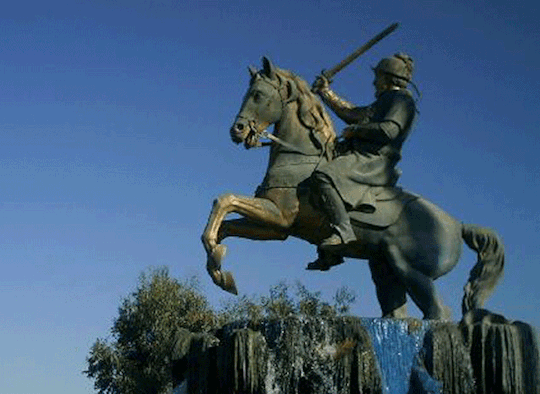


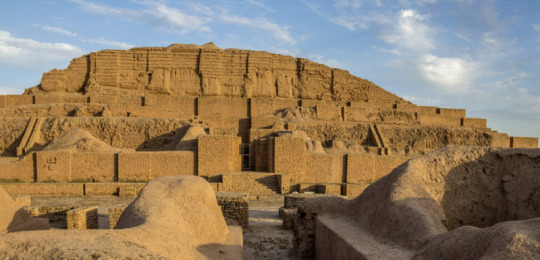
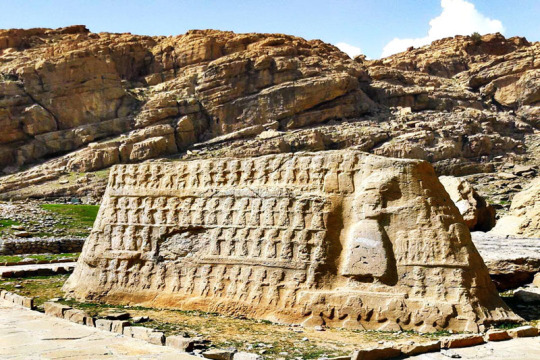
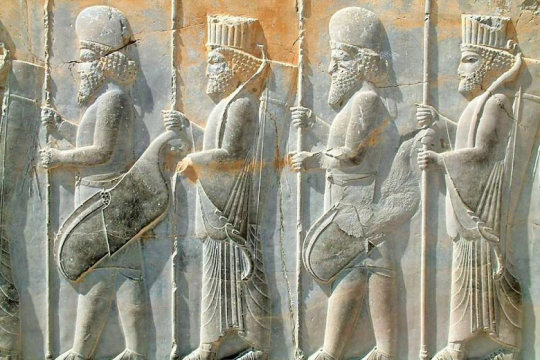
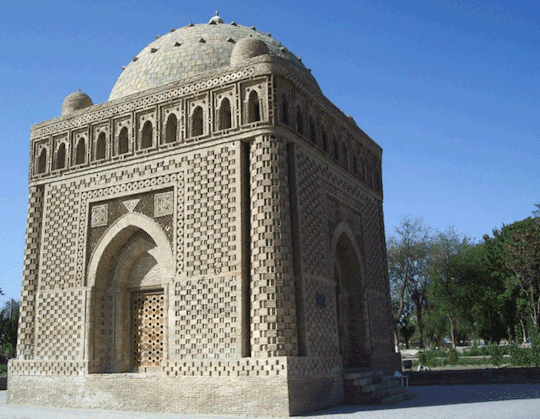


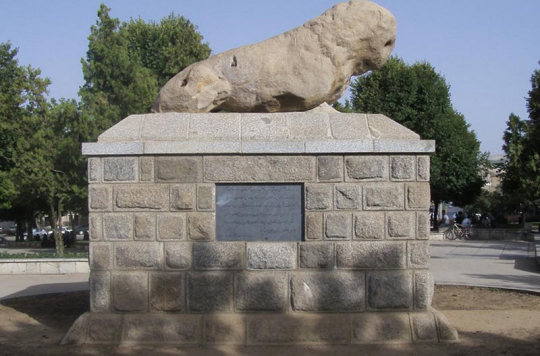
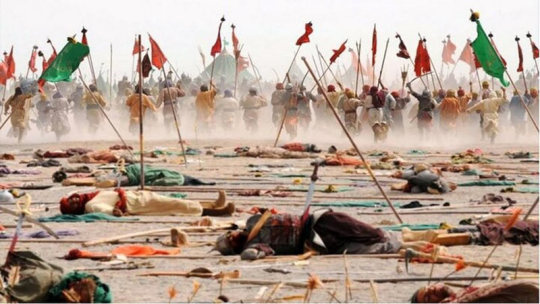
Who was the founder of the first central government in Iran?
The founder of the first central government in Iran dates back to the Achaemenid period by Cyrus the Great. Achaemenid Cyrus was crowned in 550 BC and established the first central government in Iran.
The origin of the name Iran
The country of Iran was not called "Iran" from the beginning and was known by the names of Persia, Pars and Pers among others. Saeed Nafisi suggested the word "Iran" instead of "Persia" in January 1313 AH. The naming initially caused opposition. Because the politicians considered "Persia" as an international name that was familiar among all types. The supporters of this naming also considered the term "Iran" as the best name to describe the political authority and cultural background of this country.
In 1314 AH, based on the circular of the Ministry of Foreign Affairs of Iran and the request of the then government of Reza Shah, the word "Iran" was officially used to name the country and replace other names. Professor Arthur Upham Pope, an American Iranologist, writes in the book Masterpieces of Iranian Art translated by Parviz Natal Khanleri:
The word "Iran" was used for the plateau and geographical functions of Iran in the first millennium BC.
According to Mohammad Moin, the great Iranian writer, the origin of the word "Arya" is so clear that the eastern part of Indo-Europe considers themselves proud of this name. Indo-Iranian common ancestors also introduced themselves with this name and named their country as "Iran-Oejah".
Pre-Islamic era in Iranian history
The pre-Islam era, which includes various events in the history of Iran, includes the time period before the arrival of the Aryans, that is, the rule of Elam until the end of the Sassanid rule and the arrival of the Arabs in Iran. According to historical sources, before the Aryans entered Iran, the Elamites lived as a native dynasty in the Iranian plateau.
The Elam dynasty was formed in the southwestern region of the Iranian plateau around 3,000 years BC, and they named their territory "Hatmati". The rule of Elam expanded during the period of the famous kings of this dynasty, and they dominated parts of Mesopotamia (Mesopotamia) in addition to southwestern Iran.
Whenever the Elamites gained more power, they played an important role in the Middle River politics. They overcame Sumer around 2,000 BC and completely subjugated the Mesopotamia. Historians divide the political history of Elam into three periods:
Ancient Elam, Middle Elam and New Elam
The migration of Aryans to the Iranian plateau
In the third period of the rule of Elam, the Medes, as a group of Aryans, established their power in the northwest of Iran and took control of that part of Iran. The Parthians (Ashkanians) and the Persians (Achaemenians and their successors, who were called the Sasanians) were two other Aryan tribes who formed a government in the Iranian plateau after the Medes.
There are many theories about the ethnicity, race and migration of Aryans and their entry into Iran, which are the source of disagreement among scholars and have not yet reached a single conclusion about them. Some consider Siberia as the origin of Aryans and believe that they entered the Iranian plateau from there.
The post-Islam era in Iranian history
Yazdgerd III, the last Sassanid king, was defeated by the Arabs and left Iran to them. "Rostam Farrokhzad" was defeated by the Arabs in the battle of Qadisiyah (636 AD) and lost his life despite his bravery. He organized his forces and was defeated by the Arabs in the war that took place in Nahavand (642 AD). Yazdgerd fled to the East with his family and was killed near Merv. With the death of Yazdgerd III, his empire fell in 651 AD.According to the book "Two Centuries of Silence" by "Abd al-Hossein Zarinkoub", some Iranians were not satisfied with the arrival of Arabs in the country and continued to adhere to the Zoroastrian religion. Zoroastrian Iranians paid tribute to music during this period. According to Zarinkoob, Iranians do not accept Islam with open arms and during this time, they were fighting with the Arabs in the corners and sides of Iran in order to advance them. On the other hand, Shahid Motahari criticized Zarinkoub in his book "Mutual Services of Islam and Iran" and did not consider his opinion to be scientific. He believes that Iranians accepted Islam with open arms.
The land of Iran gradually surrendered to the Arabs and only Tabaristan and Gilan maintained their independence by resisting. During this period, government powers did not rule in Iran and local governments have power in some parts of Iran.
The domination of Arabs over Iran caused their culture to be revealed in Iran, and with the beginning of independent Islamic governments in Iran, the Hijri lunar calendar, the foundations of historians in writing the history of Iran, was published.
contemporary history
World War II brought chaos to Iran and Reza Shah resigned from the throne. Mohammad Reza succeeded his father in 1320 AH (1941 AD). The creation of the 14th Parliament, the nationalization of the oil industry, the withdrawal of Soviet forces from Iran after the end of World War II, the August 28 coup, the Baghdad Pact, and the formation of the Iranian National Front were among the most important events of this period.
With the formation of the Islamic Revolution in 1357 AH (1978 CE), the life of Pahlavi rule ended and the Islamic Republic replaced it.
12 notes
·
View notes
Text
Day 8: Suraqah
Kebiasaan suamiku saat kami melakukan perjalanan yang cukup jauh adalah minta dipasangkan ceramah dari youtube. Katanya supaya perjalanannya bermanfaat. Ceramah yang sering kami dengarkan biasanya yang dibawakan oleh Ustad Abdul Somad, Ustad Adi Hidayat, Ustad Khalid Basalamah, Ustad Firanda, Ustad Salim A.Fillah, dan Ustad Hanan Attaki. Masing-masing ustad tersebut memiliki pembawaannya sendiri yang cukup khas buatku.
Pada perjalanan kali itu, kami sedang mendengarkan Ustad Hanan Attaki mengisahkan tentang seorang bounty hunter bernama Suraqah bin Malik al-Madlaji. Latar belakang kisah ini adalah ketika Nabi Muhammad SAW dan Abu Bakar berhijrah dari Kota Makkah menuju ke Madinah. Suraqah tergiur dengan iming-iming hadiah 100 ekor unta dari Abu Jahal untuk siapa pun yang bisa menangkap Nabi Muhammad SAW hidup atau mati. Berikut aku mengutip penggalan kisah yang kudengar:
Rasulullah sudah ada di depan mata Suraqah, pedang pun sudah siap ia hunuskan untuk memenggal kepala Rasulullah. Namun, atas kehendak Allah tiba-tiba kuda yang ditungganginya jatuh terguling hingga Suraqah terhempas. Debu pasir saat ia jatuh menyebabkan mata Suraqah kelilipan dan tidak bisa melihat. Kemudian saat ia hendak menunggangi kudanya kembali, kudanya jatuh lagi berulang sampai 3 kali. Bahkan kaki kudanya seakan-akan dipaku di permukaan bumi. Tidak bisa berdiri lagi.
Dalam kepayahan, Suraqah berkata kepada Rasulullah, "Wahai Muhammad, ambillah perbekalan, harta, dan senjataku. Aku berjanji tidak akan menyerangmu dan akan kusampaikan pada setiap orang Quraisy untuk berhenti mengejarmu. Berdoalah pada Tuhanmu supaya Ia melepaskan kaki kudaku". Rasulullah menjawab, "Aku tidak butuh perbekalan dan hartamu, cukuplah engkau suruh orang-orang yang hendak melacak kami untuk kembali." Rasulullah pun menawarkan imbalan atas perlindungan Suraqah berupa jubah kebesaran Raja Persia dan seketika ia lupa pada 100 ekor unta yang ditawarkan oleh bangsawan terkaya di Makkah. Betapa mudahnya Allah membolak-balik hati manusia yang tadinya berniat membunuh, kini berbalik justru melindungi Rasulullah.
Singkat cerita, kuda Suraqah normal kembali setelah Nabi Muhammad berdoa kepada Allah dan ia melindungi beliau sesuai janjinya sampai akhirnya Nabi Muhammad SAW dan Abu Bakar tiba di Madinah dengan selamat. Aku yang skeptis berkata pada suamiku, "Itu mah si Suraqah nya aja yang oon ga sih? Serakah dan mata duitan?" "Engga, itu emang Suraqah lebih percaya sama Nabi Muhammad dibanding Abu Jahal", kata suamiku. Aku yang tidak puas dengan jawaban itu akhirnya mencari cerita lengkapnya di internet:
Beberapa bulan setelah pembebasan Makkah (Fath Makkah), Rasulullah berpulang ke rahmatullah. Saat itu sudah memasuki zaman Khalifah Umar bin Khattab dan Suraqah sudah memeluk Islam. Umar telah berhasil menguasai Persia setelah menang di Perang Nahavand. Salah satu harta rampasannya adalah busana Kisra raja Persia, lengkap dengan mahkota, jubah, dan sepatu kebesarannya. Umar lalu memanggil Suraqah dan memintanya untuk mengenakan semuanya. Suraqah menitikkan air mata teringat dengan janji Rasulullah dahulu, "Demi Allah, kekasihku tidak pernah berbohong! Rasulullah tidak pernah berbohong!" Serunya sambil menangis tersedu sedan.
Tak terasa air mataku juga ikut menetes saat membacanya. Masya Allah. Astagfirullah, aku sempat meragukan kuasa Allah sang Maha Segalanya. Astagfirullahaladzim. Dari Suraqah aku belajar untuk tawadhu. Suamiku benar, perjalanan ini ada manfaatnya.
0 notes
Text
Red Persian rug 5.1'x7.9'

Red Persian rug 5.1'x7.9'
Red Persian rug 5.1'x7.9' is a handmade Persian rug with size 155x240 cm.
The material of this rug is wool.
The motif of this carpet is Nahavand Persian rug.
Read the full article
0 notes
Text
Shop A Rug | Persian Rugs Australia | Free Shipping Available
Shop A Rug offers Persian Rugs Australia with free shipping available. Certified Hand Knotted Persian Rug 300x170cm Rare Room Size Authentic Handmade Persian Nahavand Rug.
0 notes
Video
instagram
❗️ʀᴀʜ ᴍɪʀᴍ ʀᴏ ǫʟʙ ᴋʜᴀᴛᴀʀ🧘🏾♂️❗️ ______________________________________ #parkour #paris #parkourlife #parkour4life #parkourfreerun #parkourtraining #parkourlifestyle #lifestyle #nahavand #حسین_خزائی #storror #iranian #crossfitter #crossfit #viva #tinder #محرم (at Nahavand) https://www.instagram.com/p/CShV9InCblr/?utm_medium=tumblr
#parkour#paris#parkourlife#parkour4life#parkourfreerun#parkourtraining#parkourlifestyle#lifestyle#nahavand#حسین_خزائی#storror#iranian#crossfitter#crossfit#viva#tinder#محرم
4 notes
·
View notes
Video
youtube
NAHAVAND- “Hold On feat.Gotch”
3 notes
·
View notes
Text


Persian Carpet/ ashvand nahavand made/ Iran
Size: 1.5m x 2.8m - Price: ~700$
6 notes
·
View notes
Photo

(54/54) “I wish I could see it again. Just one more time. I wouldn’t need long. I’d spend a day in Tehran. I’d visit Persepolis, to see the ruins. I’d go to Nahavand, to see my people. To meet their children. And the children of their children. And then I’d go to his tomb. He was buried in his garden. And to stand there one more time, where he tended his trees. Where he sowed his seeds. Seven verses a day. I’d say them quietly in my head, I wouldn’t want to disturb the peace. But something happens, I can’t help it. I feel the heat. I feel the pressure. It’s like a sword pierces my body and I have to let it out: 𝑹𝒂𝒌𝒉𝒔𝒉 𝒓𝒐𝒂𝒓𝒆𝒅 𝒃𝒆𝒏𝒆𝒂𝒕𝒉 𝑹𝒐𝒔𝒕𝒂𝒎! The thunder of hooves, the spark of swords, the clash of axes, the single arrow spinning through the air. Who are these Persians? Rumi, Saadi, Hafez, Khayyam, Ferdowsi. Not even a lion! Not even a lion could stand against them! Our kings. Our queens. Our castles. Our battles. Our banquets. Our songs and celebrations. Our culture. Our wisdom. Our choices. Our story. And our words. All of our words. Words of mothers, words of fathers, words that teach, words that fly, words that cut, words that heal, words laughed, words sung, words wept, words prayed, words whispered in a moonlit garden, words of sin, words kissed, words sighed, words spoken from one knee. 𝘔𝘦𝘩𝘳. Words forgotten. Words remembered again. Words written on a page. Words etched on the face of a tomb. 𝘑𝘢𝘢𝘯. 𝘒𝘩𝘦𝘳𝘢𝘥. A castle of words! That no wind or rain will destroy! Who we were. Who we were! But also, who we wanted to be. We begin in darkness. A siren screams. A knight appears. A knight with the heart of a lion. A knight with a voice to make, the hardened hearts of warriors quake. A knight who rode out to face the enemy alone, and she roared. She roared! She roared at the enemy lines! Here! Here is your champion! Her wisdom, her soul, her voice, her faith, her power, her heart, her passion, her sin, her choice, her life, her fight, her fire, her fury, her justice! And her hair. Hair like a waterfall. Hair like silk. Hair like night. Hair worthy of a crown. 𝘈𝘻𝘢𝘥𝘪. All of Iran, in a single poem.”
آرزو دارم بار دیگر آن را ببینم. برای یکبار هم که شده. کوته زمانی شاید. یک روز هم در تهران بمانم. سپس به تختجمشید بروم، ویرانههای پرشُکوهش را دیدار کنم. آنگاه سری به نهاوند بروم، با سر بروم، برای دیدن زادگاهم. دیدن مردمانش. دیدن فرزندان و فرزندانِ فرزندانشان. سپس به آرامگاهاش خواهم رفت. در باغاش که خاک پاک اوست. یک بار دیگر آنجا بایستم که او درختاناش را میپروراند. زمینی که دانههایش را در آن میکاشت. هفت بیت شعر میانگین هر روزش را میسرود. سرودههایش را به آرامی در دل و جانم زمزمه کنم. آرامش آنجا را به هم نخواهم زد. بیگمان از درونم احساسی میجوشد، جلویش را نتوانم گرفت. گرمایش را، فشارش را احساس میکنم. شمشیری تنم را میشکافد، فریادم را فرو میخورم: از این سو خُروشی بر آورد رَخش / وزآن سوی اسب یل تاجبخش! پژواک سُم اسبها، درخشش شمشیرها، چکاچاک تبرها، و چرخش تکتیری در آسمان بلند. کیانند اینان، ایرانیان؟ مولانا، سعدی، حافظ، خیام، فردوسی. دل شیر در جنگشان اندکیست! شاهانمان. شهبانوانمان. کاخهامان. نبردهامان. بزمهامان. سرودها و جشنهامان. پهلوانانمان. فرهنگمان. خردمان. گُزینههامان. داستانمان. و واژگانمان. همهی واژگانمان. واژگان مادران، واژگان پدران، واژگانی که میآموزند، واژگانی که پرواز میکنند، واژگانی که میبُرند، واژگانی که بهبودی میبخشند، واژگان خندان، واژگان سروده شده، واژگان زاری، واژگان نیایش، واژگان نجوا شده در باغ مهتابی، واژگان گناه، واژگان بوسیده شده، واژگان آوخ، واژگان گفته شده بر یک زانو. مهر. واژگان فراموش شده. واژگان یادآوری شده. واژگان نوشته شده بر برگ. واژگان حک شده بر آرامگاه. جان. خرد. کاخی از واژگان! که از باد و باران نیابد گزند! که بودهایم. که بودهایم! و چه میخواستیم باشیم. در تاریکی آغاز میکنیم. بانگ آژیری برمیخیزد. سواری پدیدار میشود. پهلوانی با دل شیر. با خُروشی که دلهای استوار جنگیان را میلرزاند. پهلوانی که به تنها تن خویش به نبرد دشمن میرود. و میخُروشد. میخُروشد! میخُروشد بر صف دشمنان! اینجاست، اینجاست پهلوان شما! خِرد او، جان او، آوای او، ایمان او، نیروی او، دل او، شور او، گُناه او، گُزینهی او، زندگی او، زمان او، نبرد او، آتش او، خشم او. داد او! و گیسوان او. گیسوانی چون آبشار. گیسوانی ابریشمین، گیسوانی چون شب. گیسوانی سزاوار تاج. آزادی. همهی ایران در شعری یگانه
764 notes
·
View notes
Photo

. 🔷Portfolio of Mehrab Naghsh Carpet Company . #Imam Hussein Mosque #nahavand # design:yasin #Color: Green # Shoulder: 440/500/700/1000/1200 # Density: 800/1000/1200/2250/2550/3000/3600 To see other #carpet_design designs and to know about #sell_designs, visit our sites: 💎sajadecarpet.com 💎mehrabnaghsh.com 📲909133617256 #muslimprayer #sejadah #islamicgifts #islamichome #prayerroom #ramadangift #meraj #islam #prayer_carpet #prayerspace #islamicstyle #carpet #mousque https://www.instagram.com/p/CFMP70bBJl4/?igshid=2yqi5wfuf9l3
#imam#nahavand#color#carpet_design#sell_designs#muslimprayer#sejadah#islamicgifts#islamichome#prayerroom#ramadangift#meraj#islam#prayer_carpet#prayerspace#islamicstyle#carpet#mousque
0 notes
Photo

Hand-knotted Nahavand Rug from Iran (Persian). Only £778 https://www.olneyrugs.co.uk/shop/rugs-for-sale/persian-nahavand-19512.html Take a look at our striking collection of wall hanging rugs, kilim foot stools and Kilim cushion covers at www.olneyrugs.co.uk
0 notes
Photo

Please share and help #Shirvan #Salmas #Bonab #ShahreJadideAndisheh #Behbahan #Shushtar #Khomeyn #Nahavand #Alvand #Naqadeh #Nurabad #Takestan #Minab #Abhar #Dehdasht #Chalus #Khash #Langarud #Damghan #Firuzabad #Nurabad #Darab #RobatKarim #Piranshahr #Kamyaran #Esfarayen #Asadabad #Zarand #TorbateJam #Shahriar https://www.instagram.com/p/Bx-Prz8JXoo/?igshid=juvplwipvi0y
#shirvan#salmas#bonab#shahrejadideandisheh#behbahan#shushtar#khomeyn#nahavand#alvand#naqadeh#nurabad#takestan#minab#abhar#dehdasht#chalus#khash#langarud#damghan#firuzabad#darab#robatkarim#piranshahr#kamyaran#esfarayen#asadabad#zarand#torbatejam#shahriar
0 notes
Text
Rug Sale | Shop A Rug | Online Rug Sale
Shop A Rug is offering online rug sale in Australia. Free Shipping Australia Wide Offered! Certified Hand Knotted Persian Rug 215x138cm Rare Coffee Table Size Hand Knotted Village Persian Nahavand Rug.
0 notes